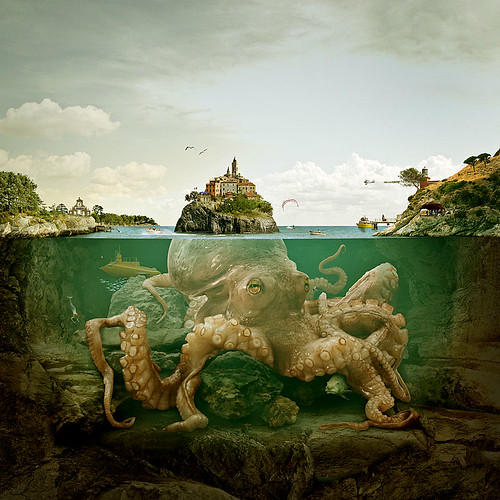There is a story that is told in all lands and throughout all history - the story of sailors who go ashore on an unknown island that later sinks and drowns them, for the island is alive. This imaginary beast-island figures in the first voyage of Sindbad and in the sixth canto of Orlando Furioso (Ch'ella sia usa isoletta ci credemo; "We are all cheated by the floating pile, / And idly take the monster for an isle"); on the Irish legend of St. Brendan and in the Greek bestiary of Alexandria; in the Swedish curate Olaf Magnus' History of the Northern Nations (Rome, 1555) and in the passage in Paradise Lost, Book I, in which the prostrate Satan is compared to a great whale "hap'ly slumbering on the Norway foam."
-Jorge Luis Borges, The Book of Imaginary Beings (El Libro de Los Seres Imaginarios)

by Paulo De Francesco, designed as cover art for Arrivederci Mostro by Ligabue, though they chose a version with a fish-zaratan instead
Often depicted as a giant turtle, like the Turtle Island origin myth common to many Native North American groups, the Zaratan could in fact be any large marine creature, including perhaps the brontosaurus and octupus depicted above and the multi-headed creature below. Scale of these creatures range from the mere rock with driftwood (to perhaps make a camp site) to full continental-scale.
Jill Bliss, Turtle City
John Kenn, Moving Island, drawing on post-it note









No comments:
Post a Comment